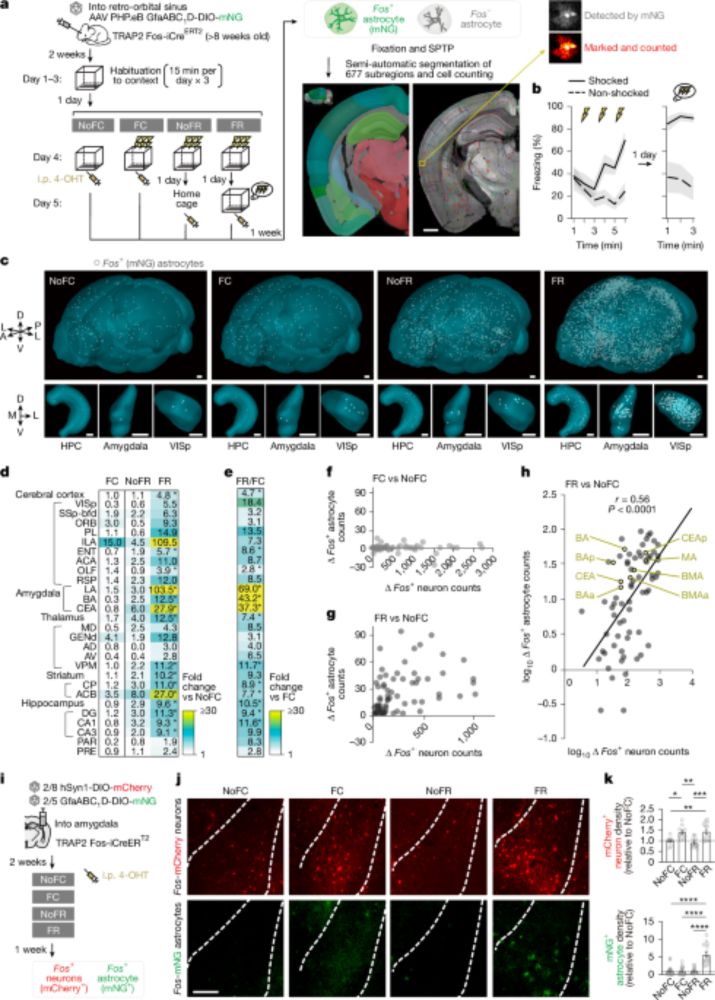
We found that having control over pain makes expectations more precise, and changes pain perception. This is accompanied by activation changes in the PAG, SMA and ACC.
You can read the full version of the paper here: rdcu.be/eQy6X

We found that having control over pain makes expectations more precise, and changes pain perception. This is accompanied by activation changes in the PAG, SMA and ACC.
You can read the full version of the paper here: rdcu.be/eQy6X
It learns predictive remapping and path integration into allocentric scene coordinates.
Now out in patterns: www.cell.com/patterns/ful...
It learns predictive remapping and path integration into allocentric scene coordinates.
Now out in patterns: www.cell.com/patterns/ful...
This paper demonstrated similar effects: pubmed.ncbi.nlm.nih.gov/37782827/
Could this explain decreased activation and increased decoding?
This paper demonstrated similar effects: pubmed.ncbi.nlm.nih.gov/37782827/
Could this explain decreased activation and increased decoding?
One idea, many ways to say it – but does your brain track those options while you speak?
Using LLMs, we put this to the test.
www.biorxiv.org/content/10.1...
We show for the 1st time that the brain represents multiple alternatives simultaneously in both listening and speaking.
🧵
One idea, many ways to say it – but does your brain track those options while you speak?
Using LLMs, we put this to the test.
www.biorxiv.org/content/10.1...
We show for the 1st time that the brain represents multiple alternatives simultaneously in both listening and speaking.
🧵

We show that rhythmic light stimulation produces multiplexed oscillatory responses at fundamental and harmonic frequencies that are spatially, temporally, and functionally distinct.
Read on for the details [1/6]
www.biorxiv.org/content/10.1...
#neuroskyence

We show that rhythmic light stimulation produces multiplexed oscillatory responses at fundamental and harmonic frequencies that are spatially, temporally, and functionally distinct.
Read on for the details [1/6]
www.biorxiv.org/content/10.1...
#neuroskyence
How does respiration influence (un-)predictable near-threshold perception? MEG, arousal modulation, excitability states, respiration phase-resolved connectivity changes - it's all there :)
#neuroskyence
www.biorxiv.org/content/10.1...

How does respiration influence (un-)predictable near-threshold perception? MEG, arousal modulation, excitability states, respiration phase-resolved connectivity changes - it's all there :)
#neuroskyence
www.biorxiv.org/content/10.1...
tl;dr: you can now chat with a brain scan 🧠💬
1/n

tl;dr: you can now chat with a brain scan 🧠💬
1/n

www.nature.com/articles/s41...

www.nature.com/articles/s41...
w/ the brilliant @cejpreston.bsky.social & @cademccall.bsky.social

w/ the brilliant @cejpreston.bsky.social & @cademccall.bsky.social
"Hierarchical dynamic coding coordinates speech comprehension in the brain"
with dream team @alecmarantz.bsky.social, @davidpoeppel.bsky.social, @jeanremiking.bsky.social
Summary 👇
1/8
"Hierarchical dynamic coding coordinates speech comprehension in the brain"
with dream team @alecmarantz.bsky.social, @davidpoeppel.bsky.social, @jeanremiking.bsky.social
Summary 👇
1/8
@sfnjournals.bsky.social! We show content-specific predictions are represented in an alpha rhythm. It’s been a beautiful, inspiring, yet challenging journey.
Huge thanks to everyone, especially @peterkok.bsky.social @jhaarsma.bsky.social

@sfnjournals.bsky.social! We show content-specific predictions are represented in an alpha rhythm. It’s been a beautiful, inspiring, yet challenging journey.
Huge thanks to everyone, especially @peterkok.bsky.social @jhaarsma.bsky.social
www.cell.com/neuron/abstr...
#neuroscience @picowerinstitute.bsky.social

www.cell.com/neuron/abstr...
#neuroscience @picowerinstitute.bsky.social
Preprint from our recent @thechbh.bsky.social study: www.biorxiv.org/content/10.1...

Preprint from our recent @thechbh.bsky.social study: www.biorxiv.org/content/10.1...
Read the full paper: nature.com/articles/s41... Tools: addgene.org/Jun_Nagai/

Read the full paper: nature.com/articles/s41... Tools: addgene.org/Jun_Nagai/
go.nature.com/4nMUgYz

go.nature.com/4nMUgYz
In our new paper w/ @anask07.bsky.social in @cp-iscience.bsky.social, we use #iEEG to study the neural basis of reactive and proactive control in medial and lateral PFC.
tinyurl.com/4bbwbffv

In our new paper w/ @anask07.bsky.social in @cp-iscience.bsky.social, we use #iEEG to study the neural basis of reactive and proactive control in medial and lateral PFC.
tinyurl.com/4bbwbffv

